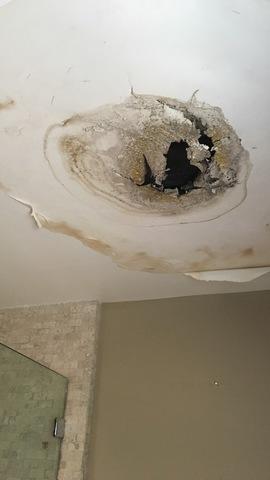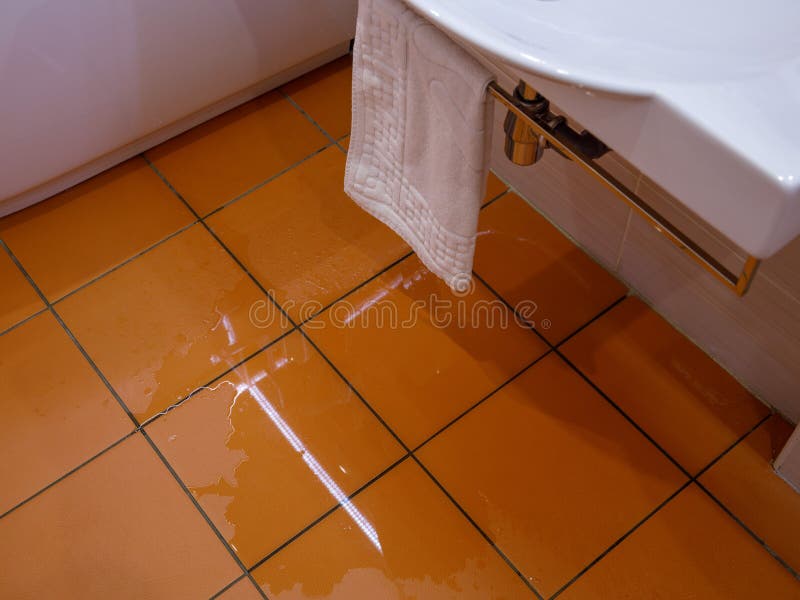What Leads to Humidity Harm in the Bathroom
What Leads to Humidity Harm in the Bathroom
Blog Article
What are your insights and beliefs about How to Repair and Prevent Bathroom Water Damage??

Water damage often happens in the restroom due to the water utilized day-to-day. Occasionally, the damage could be a little mold from the shower. Other times, it's substantial damage on your flooring. Whatever it is, it is constantly excellent to know the cause as well as avoid it prior to it takes place.
This overview will undergo several of the usual causes of water damage in the bathroom. We will also examine what you can do to avoid these reasons from damaging your washroom. Let's dive in.
5 Usual Reasons For Water Damage in Bathrooms
These are the typical factors you would certainly have water damage in your bathrooms and how you can find them:
Burst or Leaking Pipes
There are many pipes carrying water to different parts of your washroom. Some pipes take water to the commode, the sink, the faucets, the shower, and numerous other places. They crisscross the small area of the restroom.
Occasionally, these pipes might obtain rustic as well as ruptured. Other times, human action could cause them to leak. When this occurs, you'll discover water in the corners of your bathroom or on the wall surface.
To find this, look out for gurgling wall surfaces, molds, or mildew. Call a professional emergency plumber to repair this when it happens.
Fractures in your wall tilesv
Shower room wall ceramic tiles have been particularly created for that objective. They secure the wall from moisture from individuals taking showers. Nevertheless, they are not undestroyable.
Often, your restroom wall surface tiles fracture as well as allow some dampness to leak into the wall surface. This might potentially damage the wall surface if you do not take any type of activity. If you observe a fracture on your wall tiles, repair it promptly. Don't wait up until it destroys your wall surface.
Overruning toilets and also sinks
As people, sometimes we make errors that could cause some water damage in the washroom. For instance, leaving your sink tap on can trigger overflowing and also damages to other parts of the washroom with dampness.
Also, a damaged bathroom can cause overruning. For example, a damaged bathroom take care of or various other parts of the cistern. When this takes place, it could harm the flooring.
As soon as you see an overflowing sink or bathroom, call a plumbing to aid take care of it instantly.
Roof Leaks
Occasionally, the problem of water damage to the shower room might not come from the washroom. For instance, a roof covering leak can create damages to the restroom ceiling. You can detect the damages done by considering the water spots on the ceiling.
If you find water spots on your ceiling, examine the roofing system to see if it's damaged. After that, call a specialist to help resolve the issue.
Excess Wetness
It's great to have that lengthy shower as well as sprinkle water while you hem and haw and also imitate you're performing, but in some cases these acts can create water damage to your shower room.
Spraying water around can cause water to go to edges as well as form molds. Enjoy just how you spread out excess moisture around, and when you do it, clean it up to prevent damage.
Conclusion
Water damage to your restroom can be frustrating. Nonetheless, you can manage it if you stop several of the reasons pointed out in this guide. Call an expert emergency plumbing technician if you notice any severe damages.
How to Prevent Water Damage in Your Bathroom?
Water damage repair is an expensive, meticulous, and lengthy process. Unfortunately, bathrooms are the most susceptible rooms to water damage due to toilets, showers, and sinks. Pipes and fixtures wear out over time and are not immune to damage. But all is not lost, as there are ways to prevent water damage from occurring in your bathroom.
Check Your Plumbing
Nothing lasts forever, especially pipes, which can rust and begin leaking over time. You should periodically conduct pipe inspections and pay attention for any musty smells or water stains that may indicate you need water damage repair. Here are some things to check:
Frequently test valves for your toilet, shower, and sink to ensure they are properly working.
Check faucet supply lines hidden under vanities and replace when needed.
Replace cracked or deteriorating caulking along sinks, tubs, and showers.
If you notice a clog in your sink, call in a professional.
Since you can’t check the pipes in the wall, keep an eye out for stains, drywall bubbling, musty smells, and excess moisture; if the bathroom is on a second level, check the ceiling of the room directly below for these signs.
Don’t Overwork Your Toilet
One of the most common reasons bathrooms need water damage repair is due to overflowing toilets. Save yourself the hassle of cleanup by being mindful and not pushing your toilet to extreme limits. If you have young children, it is especially important to keep an eye on them when they are in the bathroom and to teach them how to avoid clogging the toilet. Here are some more tips to help prevent your toilet from overflowing:
If you have a septic tank, only use septic-safe toilet paper
Do not flush anything down the toilet besides toilet paper; items like diapers and sanitary napkins will clog the piping
Pay attention to your toilet’s water level: If it’s low, it could mean it is partially clogged or that there is a crack in the toilet bowl
https://www.alure.com/home-improvements-blog/resources/how-to-prevent-water-damage-in-your-bathroom

How to Prevent Water Damage in Your Bathroom?
Water damage repair is an expensive, meticulous, and lengthy process. Unfortunately, bathrooms are the most susceptible rooms to water damage due to toilets, showers, and sinks. Pipes and fixtures wear out over time and are not immune to damage. But all is not lost, as there are ways to prevent water damage from occurring in your bathroom.
Check Your Plumbing
Nothing lasts forever, especially pipes, which can rust and begin leaking over time. You should periodically conduct pipe inspections and pay attention for any musty smells or water stains that may indicate you need water damage repair. Here are some things to check:
Don’t Overwork Your Toilet
One of the most common reasons bathrooms need water damage repair is due to overflowing toilets. Save yourself the hassle of cleanup by being mindful and not pushing your toilet to extreme limits. If you have young children, it is especially important to keep an eye on them when they are in the bathroom and to teach them how to avoid clogging the toilet. Here are some more tips to help prevent your toilet from overflowing:
https://www.alure.com/home-improvements-blog/resources/how-to-prevent-water-damage-in-your-bathroom
As a reader about How to Repair and Prevent Bathroom Water Damage?, I thought sharing that chunk was worthwhile. Sharing is nice. Helping people is fun. Thank you for going through it.
No more leaks, call us! Report this page